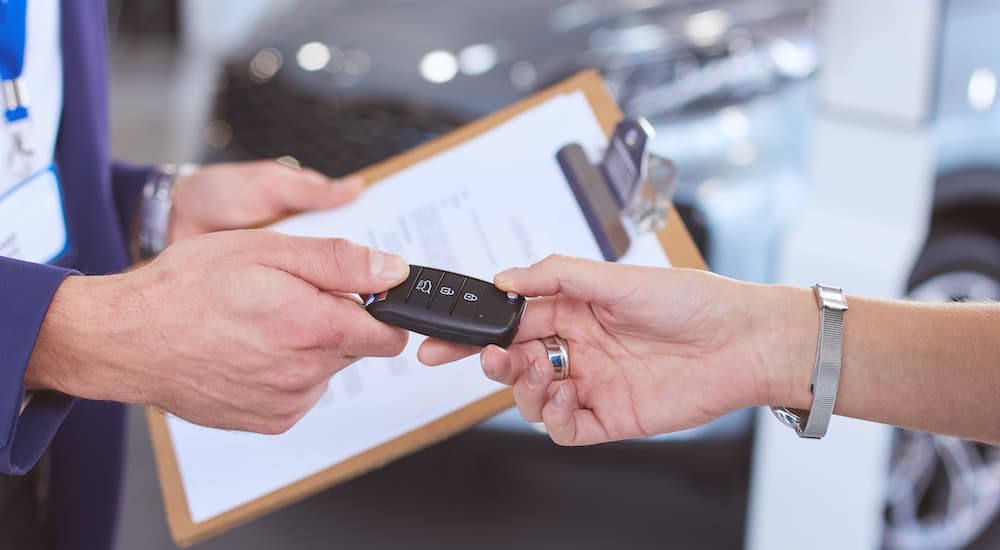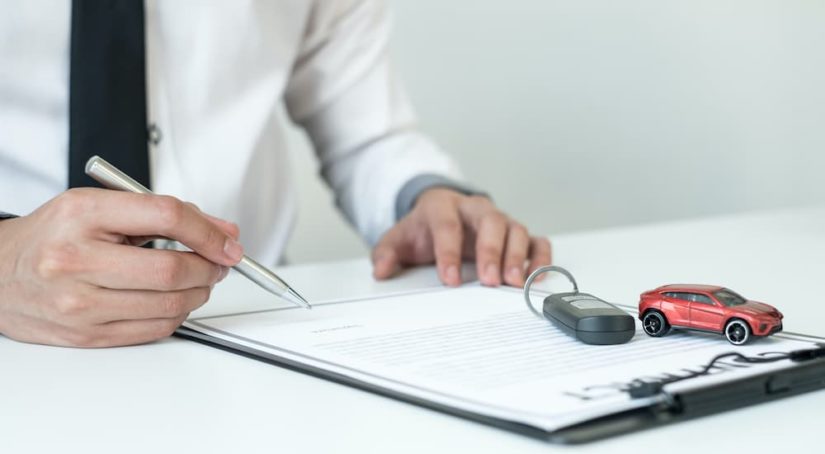If your Ford lease is coming to an end, then you’re probably wondering what you’ll need to do and if you should lease a new Ford when the time comes to return the one you have. While I can’t answer this question for you, I’m here to provide you with some general instructions on what to expect with your Ford end of lease process and suggestions on what to do next. It’s really going to depend on what you want with your next vehicle, though I’ll say that if you’ve enjoyed leasing your first Ford, then getting another lease might be the way to go.
Leasing a vehicle isn’t for everyone; plenty of people really want to own their vehicle after paying for it for several years. But for others, ownership doesn’t really matter, and you’d much rather get to enjoy the latest bells and whistles every few years rather than every decade or so. Fortunately, going through the end of lease process with a Ford is quite simple, and while your preferred dealership will happily walk you through it, I’ll give you a good overview to get you pointed in the right direction. Then we’ll talk about whether or not a new Ford lease is the right move for you.
What Is a Lease?
For the most part, I’m going to assume that you already have a lease that’s nearing its end, but just in case you’ve come here interested in leasing a vehicle for the first time, I want to go over the basics real quick. A lease is a form of vehicle financing where you pay monthly to drive a new vehicle for a set term – usually two or three years. At the end of the lease term, you return your vehicle, and you’re then free to buy or lease another model.
You don’t actually buy the vehicle during a lease or own it at the end of the term. With a lease, you’re not paying off a loan to buy a car; instead, you’re paying for the depreciation that occurs while you enjoy and use the vehicle. This lets you get the most out of a brand-new car for several years at a lower cost than if you wanted to buy it.

The Ford End of Lease Process
Now, if you’re coming up on the end of lease point for a Ford that you’ve been driving for a few years, you might be wondering what happens next. Fortunately, the process is quite simple, but there are some important steps and things to keep in mind. All of this information can be found on the Ford website, and you can always contact your dealership for more specific details for you and your lease-end process.
First up, you should look at your lease paperwork or log into the Ford website to look at your lease account information. This will include the end of lease date for you: this is the date that you need to return your leased vehicle by according to your agreement. It’s vital to know this date ahead of time not only because you need to make sure you return it on time but also because you need to schedule a lease-end inspection within 60 days of that lease-end date.
This inspection is very important – not only is it required by your lease agreement, but it will identify any issues you need to have taken care of before you can return your leased vehicle. This includes any damage or wear and tear that goes beyond what is allowed based on your lease agreement (we’ll go over that in a moment). If you don’t have this addressed after the inspection and instead return your lease with this damage still there, then you’ll be charged for the repairs that are still necessary. This can end up costing you more than handling it yourself or taking it to a shop, so get the inspection and handle anything that needs to be addressed.
The End of Lease Inspection
I know I already mentioned the lease-end inspection a bit, but it’s so important that I want to go into some more details. Remember that this is for Ford vehicles specifically. While some of this could apply to other vehicle leases, each manufacturer has its own terms and conditions.
Before you take your vehicle in for the lease-end inspection, you can do a self-inspection to check for any issues ahead of time. Look for excess wear and tear or damage to the vehicle: trust me, the inspector will find it. You should also clean your vehicle, inside and out, before heading to the inspection so that it looks as good as possible. The inspection will only take about 30 minutes, but make sure you have time for the scheduled day.
For the most part, the issues that arise will be anything that goes beyond the normal wear and tear that’s allowed by your lease agreement. Ford leases typically define excess wear and tear as:
- Four or more scratches or dings to the exterior panels, or any longer than 4 inches
- Any glass damage, which includes windows and the windshield
- Cracked or broken headlights or taillights
- Scratches or gouges to the wheels larger than 6 inches
- Any sidewall damage to the tires
- More than two burn holes in the interior, or any larger than one-eighth inch in diameter
- More than one interior stain per area, or any stains larger than half an inch
- More than two interior cuts or tears per area, or any tears larger than half an inch
You can offset the potential costs of wear and tear on the vehicle by purchasing WearCare from Ford with your initial lease, which waives up to $5,000 in charges. You’ll also have a mileage limit as part of your lease agreement, and if your final mileage is found to go beyond this limit, you’ll be charged for each mile in excess of it. This is very important and something a lot of people, who are enjoying a lease for the first time, can easily forget.

Now What? Should I Lease a New Ford?
As you return your vehicle at the end of its lease, you essentially have three options available to you for your next car: buy the car you’ve been leasing, just return your vehicle, or buy or lease a new vehicle. If you’ve fallen in love with your car as you’ve leased it, then buying it outright can be a great choice; after all, you already know what to expect from it. Assuming that you need to replace the car you’re returning, your best bet will be to buy or lease a new model.
It’s usually pretty easy to decide if another lease is right for you, just based on your experiences with your first Ford lease. If you enjoyed getting to have the latest features on a new model without the expense of paying off a loan to buy it, then another lease could definitely be a great choice. A lot of people lease vehicles as part of a business – as long as you use the car for your business – and continuing with another Ford lease is a great choice in these situations. You might even be able to have some lease-end fees waived if you’re immediately getting another lease, so discuss this option with your dealership and see how they can work with you.



